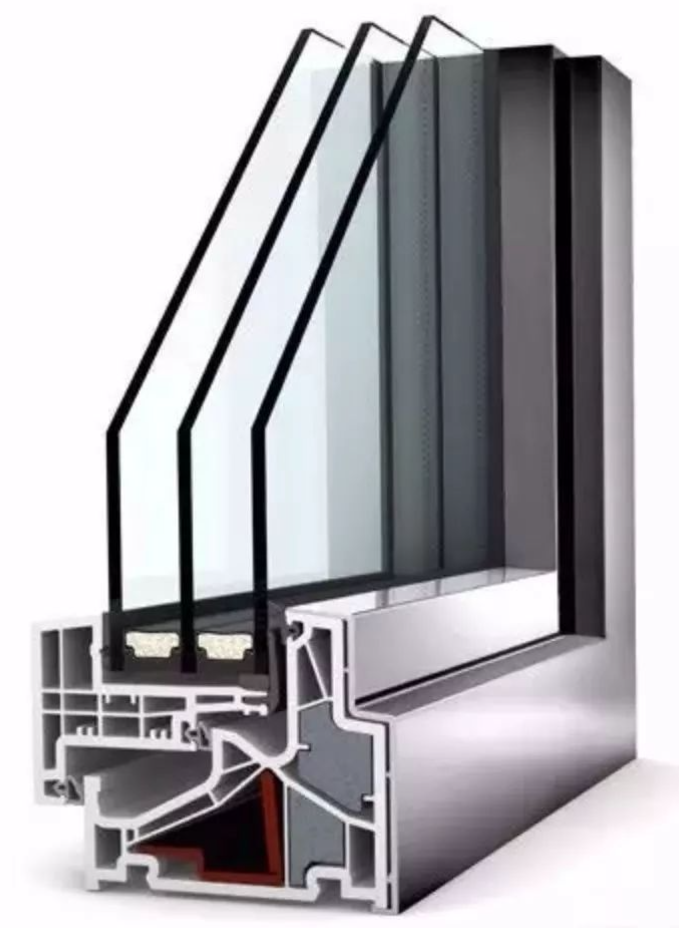Window Types and Structures
Sample Corner Types:
- Single internal opening window
- Single external opening window
- Internal opening window with integrated mosquito net
- External opening window with integrated mosquito net
Opening Sashes:
- Open inward as internal opening window
- Windows that open outward are external opening windows, and external opening windows have an additional conversion frame.
Integrated Window and Mosquito Net:
- Based on internal or external opening windows, an additional mosquito net section is added.
Window Profile
Profiles mainly refer to aluminum alloys and thermal breaks. We need to focus exclusively on two aspects: the overall profile width and the width of the thermal breaks.
Configuration Item

Profile Width
Material: Aluminum Alloy
Influencing Factors: Space size, price, product series
Recommended Choice: Choose according to design requirements and budget
Remarks: The wider the width, the higher the price
Thermal Break Width
Material: PA66, GF25, composed of polyamide and 25% glass fiber
Influencing Factors: Thermal insulation performance, window strength
Recommended Choice: 24mm~35mm is a reasonable choice
Remarks: Too wide affects window strength; meets national standards, first-tier brands usually do not use recycled materials
Aluminum Wall Thickness
Material: Virgin Aluminum/Recycled Aluminum
Influencing Factors: Profile strength
Recommended Choice: Meets new national standard of 1.8mm
Remarks: Ensures window durability
Cavity Design
Influencing Factors: Drainage, hardware installation
Recommended Choice: Choose according to actual situation
Remarks: Has little impact on performance
Coating Technology
Influencing Factors: Appearance, durability
Recommended Choice: Various technologies, no special attention needed
Remarks: Aesthetic choices can be based on personal preference
Corner Assembly Process
Composition: Mechanical corner impact and pin assembly, glue injection to increase strength
Influencing Factors: Window strength
Recommended Choice: Glue injection process increases strength
Remarks: There is little difference between corner impact and pin assembly processes
Thermal Break Shape
Influencing Factors: Thermal insulation performance
Recommended Choice: Regular shape is sufficient
Remarks: Special shapes offer limited performance improvement
Cavity Filling
Material: Filled with polyurethane foam/insulation cotton
Influencing Factors: Thermal insulation performance
Recommended Choice: The impact of filling materials on reducing K-value is not significant
Remarks: There may be differences depending on the manufacturer
- The importance of aluminum material is overestimated: It is commonly believed in the market that virgin aluminum is superior to recycled aluminum. But in reality, the quality difference between aluminum alloys is not significant, and major brands do not cut costs in this area.
- The practicality of thermal break alignment: Although aligning thermal breaks is thought to enhance thermal insulation, the actual impact is minimal, and consumers should not focus too much on this when making a choice.
- Pay attention to the new national standard for wall thickness: Ensure that the wall thickness of the aluminum profile of the windows you choose complies with the new national standards to guarantee the strength and durability of the windows.
- Do not overly pursue material and alignment: When purchasing, there is no need to overly pursue the origin of the aluminum material and the alignment of the thermal breaks; instead, focus more on the overall performance and price of the product.

